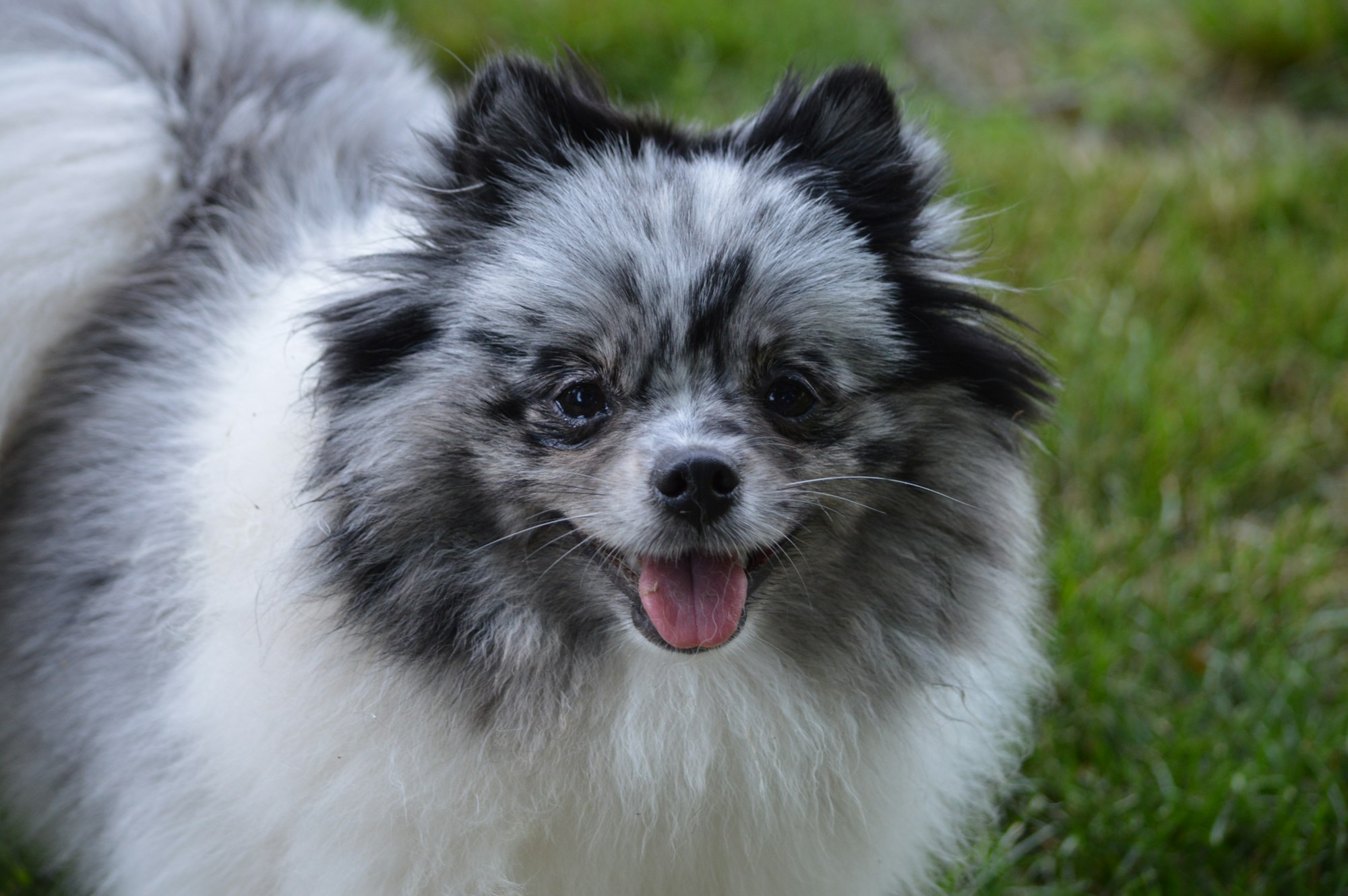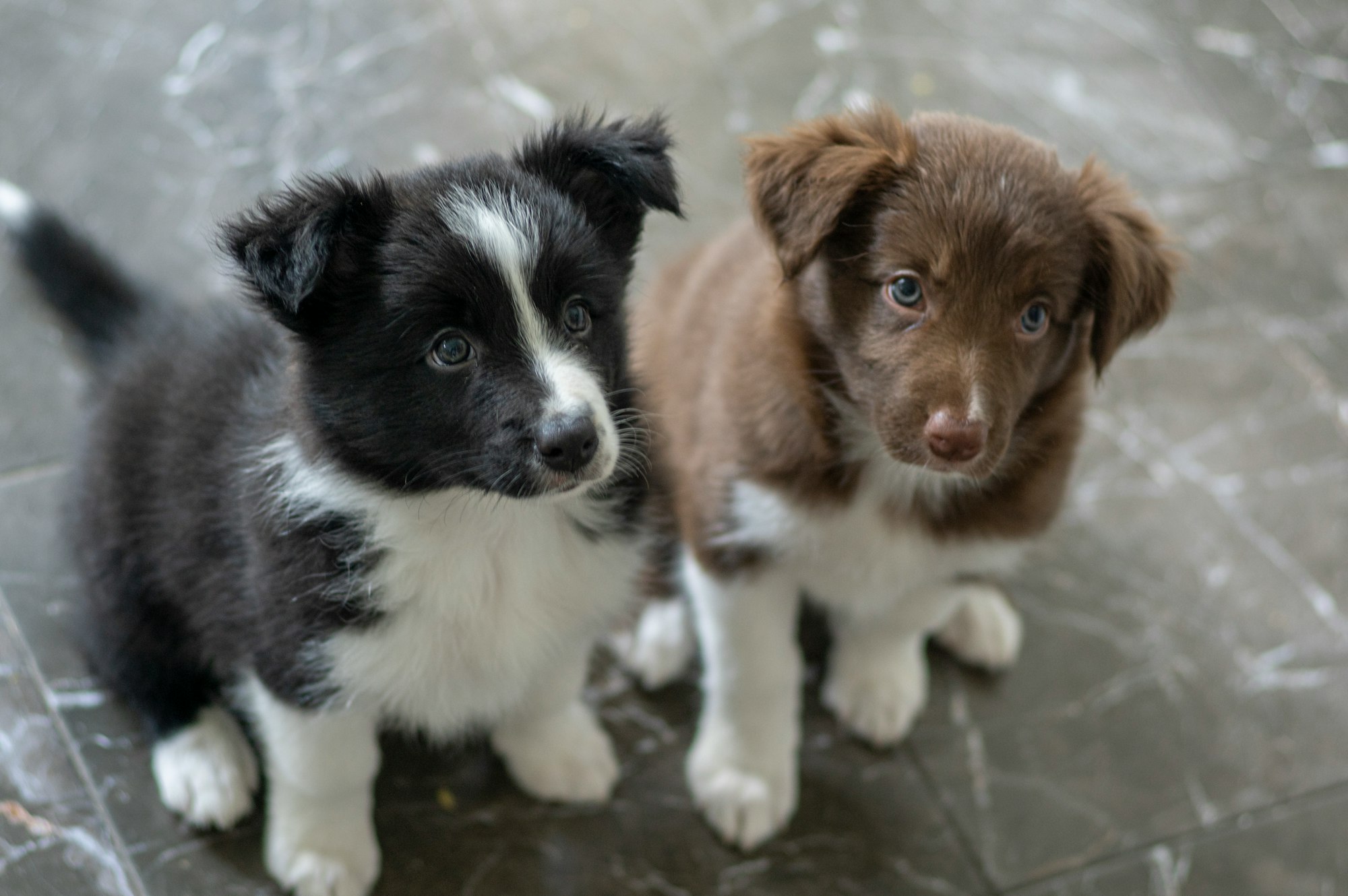Mastering the art of grooming a Black Pomeranian is akin to becoming a pro in an artist's workshop, only that your canvas is your furry friend. Picture this: It’s a Saturday morning, the sun is shining, birds are chirping, and Coco, your Black Pomeranian, jumps onto your lap, her coat all tangled and messy, signaling the time for her grooming session.
Why Grooming Matters
The importance of grooming goes beyond the aesthetic appeal of a well-groomed dog. It's about health, well-being, and bonding. Just as humans feel better after a spa day or haircut, your Pomeranian feels lighter and happier after a good grooming session. And don’t we all want our pets to feel their best?
Dive into the Basics: Tools and Techniques
When it comes to grooming, having the right tools is crucial. For Black Pomeranians, their thick, double coat demands specific care.
- Brushes for Pomeranians: These are not your average brushes. Choose a good quality slicker brush to deal with matting and a pin brush for that perfect fluff.
- Hair Care Products: Consider a good quality dog shampoo that's mild and moisturizing, designed specifically for a Pomeranian's coat type.
- Nail Clippers: Black Pomeranians, like many medium-sized dogs, require regular nail trimming. Look for clippers that are sharp and sturdy.
Remember, grooming isn't just about brushing. It encompasses nail trimming, ear cleaning, and regular baths.

Handling the Black Coat
A Black Pomeranian's coat is majestic. It’s thick, lush, and as dark as the night. Yet, it’s also prone to getting dusty and dull if not cared for correctly.
Imagine attending an art class. When you're handed a black canvas, every color you throw on it shines vibrantly. But a few smudges or dust particles, and the charm is lost. Similarly, with a Black Pomeranian, regular brushing keeps the coat shiny, healthy, and dust-free.
The Unexpected Concerns: Real-Life Situations
Ever heard of a Collie nose? No? Neither did Lisa, until one day she noticed a weird discoloration around her Pomeranian's nose. After a quick vet visit, she was educated about it. While it's not common in Pomeranians, knowing about potential issues helps you stay ahead.
Similarly, an energetic Pomeranian, just like kids, might get concussions if they jump or run around carelessly. Being educated about signs and symptoms ensures prompt action.
Another time, at a dog park, someone mentioned how Black Pomeranians look like miniature versions of some italian dog breeds. Although not accurate, it's fun to learn about various perceptions and comparisons.
Diet: Not All Treats Are Equal
Be careful about what treats you give your Pomeranian. While they might love to eat pepperoni, it may not be the best choice for their health. Like all breeds, certain foods can be harmful or just too rich for them.
When Grooming Becomes A Tale
Once, at a local grooming salon, a peculiar duo caught everyone's eye. It was a basset hound beagle mix, twice the size of a Pomeranian, waiting its turn. The stark difference between the grooming needs of these breeds was a sight to behold. While the Pomeranian required intricate haircare, the other dog's requirements were entirely different.
Pomeranian Personalities and Their Influence on Grooming
While it may seem surprising, the unique personality of your Black Pomeranian can significantly influence their grooming routine. For example, a more playful and outdoorsy Pom might get dirtier faster and require more frequent baths, while a laid-back, indoor Pomeranian might not.
Grooming Sessions: Bonding Opportunities
Every grooming session is a unique chance to strengthen your bond with your Pomeranian. Some dogs might be apprehensive about baths or nail clippings at first. But with patience, gentle reassurance, and maybe a treat or two, these sessions can become something both of you look forward to.
Think of it as a spa day. It's relaxing, rejuvenating, and refreshing. By setting a calm environment, perhaps with some soft music and gentle brush strokes, you're setting the scene for a comfortable grooming experience.
Learning from Mistakes: Common Grooming Blunders
There's no manual that ensures a 100% mistake-free grooming journey. Sometimes, you might cut the nails a tad too short or miss a small mat in the fur. And that's okay. What's essential is learning from these mistakes.
For instance, Jane, a new Pomeranian owner, once made the mistake of using human hair products on her little furball. The result? A slightly irritated skin and a lesson well learned. It's all part of the journey.
Seeking Expert Advice
While DIY grooming can be satisfying, there's no harm in occasionally seeking help from professionals, especially when you're just starting. Grooming salons have experts who have handled hundreds, if not thousands, of dogs. They can provide insights, tips, and tricks that might not be common knowledge. Plus, watching a professional handle your Pomeranian can be a great learning experience in itself.

Embracing the Pomeranian Fluff
The fluffy nature of Pomeranians is both their charm and challenge. Unlike straight-haired breeds, a Pomeranian's fluff can trap dirt, debris, and even food particles (think about the aftermath of them trying to snatch a piece of pepperoni!). Regular checks and prompt cleaning can prevent potential skin issues or infections.
The Seasonal Dance: Grooming Changes With the Weather
Just as we adjust our skincare routines with changing seasons, Black Pomeranians too have varying needs depending on the time of year.
Winter Woes
As temperatures dip, the dense double coat of your Pomeranian provides the necessary insulation. But this is also the time when static electricity can cause the fur to get frizzy and matted. Using a moisturizing spray or conditioner during brush sessions can be a savior. Also, keep an eye out for snow or salt stuck in their paws after outdoor excursions.
Summer Solutions
Contrary to what many believe, you shouldn't shave your Pomeranian in the summer. Their coat acts as a natural insulator against both cold and heat. However, frequent brushing to remove the dead undercoat helps them stay cooler. Also, make sure to check for any ticks or fleas that might find solace in the thick coat, especially after outdoor activities.
The Rainy Remedy
Rain means mud and mud means... well, a messy Pomeranian. After a playful session in the rain, it's crucial to ensure they are dry and clean to avoid any fungal infections. A quick towel dry, followed by a gentle blow-drying session, ensures the fur stays fluffy and healthy.
A Word on Allergies
Much like the basset hound beagle mix might be prone to certain allergies, Pomeranians too can show allergic reactions. Often, these are skin-related and may be exacerbated during specific seasons. Regular grooming helps you keep an eye out for any irregularities or issues. If you notice any redness, itching, or discomfort, a vet visit might be in order.
Dressing Up: Beyond Just Grooming
Sure, grooming is essential, but who can resist those adorable doggy outfits? Whether it's Halloween or just a regular day, many Pomeranian owners love to dress up their furballs. However, be mindful. Ensure the outfits are comfortable, made of breathable materials, and most importantly, don't restrict movement.
There's also a functional aspect to it. In colder months, a cute little sweater can provide added warmth, especially if you're taking them out for a walk.

Navigating Health Concerns through Grooming
Your grooming sessions are more than just ensuring a good-looking Pomeranian. They're a hands-on health check. For instance, while cleaning the ears, you might detect a foul odor or excessive wax, indicating a possible infection.
Similarly, while giving them a bath, you might feel a lump or bump that wasn't there before. These sessions allow you to stay ahead of potential health issues and seek timely intervention.
Embracing the Digital Age: The FI Dog Collars
In the ever-evolving realm of pet care, technology has made significant strides, ensuring our furry friends are not only well-groomed but also safe and monitored. Enter the FI dog collars, a game-changer in the world of canine accessories.
FI Dog Collars: An Overview
At its core, the FI dog collar is more than just a collar. It's a tech-packed accessory designed to provide owners with real-time data about their dog's location, activity, and overall well-being.
Seasonal Adventures with FI Collars
Winter Trails
Imagine taking your freshly groomed Black Pomeranian for a walk in the snow. With the FI collar, not only can you ensure they're safe, but you can also track how much activity they're getting. The collar can provide insights on whether your Pom is getting the right amount of exercise for the colder season.
Summer Escapades
During those summer hikes or beach outings, the risk of your dog wandering off is real. The FI collar's location tracking ensures you always know where your pet is. Plus, it helps you monitor their activity levels to ensure they're not overexerting themselves in the summer heat.
Rainy Days and Muddy Play
Your Pomeranian loves to play in the rain, and with the FI collar, you won't have to constantly keep an eye on them. The collar is built to withstand the elements, ensuring your pet's safety without compromising on technology.

Dressing Up with a Purpose
While those cute outfits for your dog are always a hit, the FI collar adds a touch of functionality to the style. It's sleek, modern, and can easily blend with any outfit, ensuring your Pomeranian is not only the best-dressed dog in town but also the safest.
Health Monitoring Made Easy
One of the standout features of the FI dog collar is its ability to track health metrics. During your grooming sessions, you can now get insights on how active your Pomeranian has been, if they've had enough rest, and any significant changes in their routine. This data can be vital in preempting potential health issues.
Conclusion:
In mastering the art of grooming a Black Pomeranian, we traverse a multifaceted journey, from understanding their unique coat requirements across seasons to recognizing the potential health signals during grooming sessions. Embracing innovations like the FI dog collar not only ensures our Pomeranian's safety but also offers insights into their well-being.
This symphony of care blends traditional grooming practices with modern technology, creating a harmonious balance. It's about celebrating the beauty of our furry friends, staying attuned to their needs, and leveraging advancements to enhance their quality of life. Truly, grooming transcends aesthetics; it's a testament to love, care, and progress.
FAQs
What makes grooming a Black Pomeranian different from other breeds?
Black Pomeranians have a unique double coat that requires specialized care, and their dark fur can sometimes mask underlying skin issues, necessitating attentive grooming.
How often should I groom my Black Pomeranian?
While daily brushing is ideal to prevent tangles and mats, bathing can be done once a month or as needed based on your Pomeranian's activities.
Why is seasonal grooming essential for a Black Pomeranian?
Seasonal changes can impact the Pomeranian's coat health and comfort. Adapting grooming routines helps in managing challenges like static during winters or ticks during summers.
Can I use human products for grooming my Pomeranian?
It's best to avoid human products as they may not be pH-balanced for dogs, which can lead to skin irritations.
How can the FI dog collar complement my grooming routine?
The FI dog collar offers real-time data on your dog's location and activity. It helps monitor their well-being, ensuring safety during outdoor activities and offering insights into their health.
Is it safe to dress up my Pomeranian regularly?
Yes, as long as the outfits are comfortable, breathable, and don't restrict movement. It's also essential to monitor for any signs of discomfort.
How does grooming help in detecting health concerns?
Regular grooming allows owners to identify irregularities, lumps, or changes in skin condition early on, ensuring timely medical interventions if needed.
What should I do if my Pomeranian shows signs of allergies post-grooming?
Consult a vet if you notice any redness, itching, or discomfort post-grooming, as these could indicate allergic reactions or other skin-related issues.